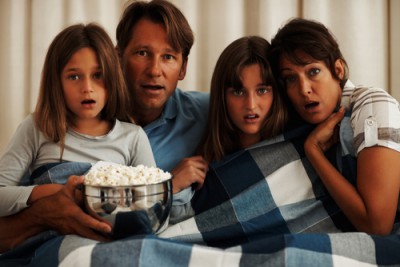- Because Our Children Are Watching
- Join the Cause
- Donate
Written by PTC | Published March 24, 2016
 Any reasonable person would be justified in assuming that PG is PG is PG; whether you are watching a television program or a movie, if it carries a PG rating, the ratings should be comparable and the content, roughly equivalent. But Hollywood’s standards and justifications aren’t necessarily reasonable.
In the past year, Disney has released a number of PG-rated films that by most parents’ reckoning, are perfectly well suited for their youngster. The live-action version of Cinderella, for example, was rated PG. As was the latest Pixar film, Inside Out, and the animated The Good Dinosaur. As is true with any good children’s entertainment, there is enough in each of these films to keep adult audiences entertained without resorting to adult innuendo, crass bathroom humor, or coarse language; but they were clearly made with young audiences in mind, and many parents would take their youngsters to the theater to see these movies without a moment of hesitation.
Shouldn’t parents be able to invest the same level of trust in a television program that carries a PG rating? Wouldn’t they be justified in assuming that standards for a PG rating are the same regardless of the medium?
Take a look at the recently debuted The Real O’Neals on ABC – owned by Disney, the same parent company behind the theatrical releases Inside Out, Cinderella, and The Good Dinosaur. In a recently completed analysis of the first three episodes of this PG-rated television show, the PTC found one instance of adult content every 43 seconds. And this wasn’t “mild thematic elements,” which was the reason for Cinderella’s PG-rating; or “peril” and “action” which the MPAA considered deserving of a PG label in the case of The Good Dinosaur and Inside Out. No, it was jokes about condoms, masturbation, prostitution, internet pornography and S&M sex play, as well as nearly non-stop talk about teen sex, and a seemingly endless string of deliberately scripted – then bleeped – “F-“ and “S-words.”
Any reasonable person would be justified in assuming that PG is PG is PG; whether you are watching a television program or a movie, if it carries a PG rating, the ratings should be comparable and the content, roughly equivalent. But Hollywood’s standards and justifications aren’t necessarily reasonable.
In the past year, Disney has released a number of PG-rated films that by most parents’ reckoning, are perfectly well suited for their youngster. The live-action version of Cinderella, for example, was rated PG. As was the latest Pixar film, Inside Out, and the animated The Good Dinosaur. As is true with any good children’s entertainment, there is enough in each of these films to keep adult audiences entertained without resorting to adult innuendo, crass bathroom humor, or coarse language; but they were clearly made with young audiences in mind, and many parents would take their youngsters to the theater to see these movies without a moment of hesitation.
Shouldn’t parents be able to invest the same level of trust in a television program that carries a PG rating? Wouldn’t they be justified in assuming that standards for a PG rating are the same regardless of the medium?
Take a look at the recently debuted The Real O’Neals on ABC – owned by Disney, the same parent company behind the theatrical releases Inside Out, Cinderella, and The Good Dinosaur. In a recently completed analysis of the first three episodes of this PG-rated television show, the PTC found one instance of adult content every 43 seconds. And this wasn’t “mild thematic elements,” which was the reason for Cinderella’s PG-rating; or “peril” and “action” which the MPAA considered deserving of a PG label in the case of The Good Dinosaur and Inside Out. No, it was jokes about condoms, masturbation, prostitution, internet pornography and S&M sex play, as well as nearly non-stop talk about teen sex, and a seemingly endless string of deliberately scripted – then bleeped – “F-“ and “S-words.”
Vice Principal Murray: “Well my ex-wife performed several love crimes on me during our marriage, which is why we always had a safe word.” Vice Principal Murray: “Well, you did use one of the banned words, which include but are not limited to ass, bitch, butt head, douche, slut, slut shamer, slut bag, slut basket…” Kenny: “V. P. Murray, this policy is the [bleeped unknown] [bleeped unknown] lamest, [bleeped unknown] ass tickling, [bleeped unknown] sucking thing I’ve ever heard.”In other words, content closer to what you might expect to see in a PG-13-rated film is airing now on a program that is billed as a family comedy, airs during the traditional “Family Hour” and carries the least age-restrictive rating being used by the broadcast networks during prime time [until the debut last week of Little Big Shots on NBC, there were no regularly scheduled G-rated programs airing on the broadcast networks during primetime]. A rating that is also shared with mostly innocuous programs like Undercover Boss, Shark Tank, and The Voice. So why should parents trust the television ratings system, when this is what they are given: a confusing, inconsistent mess that leaves innocent children exposed to wretched content.
